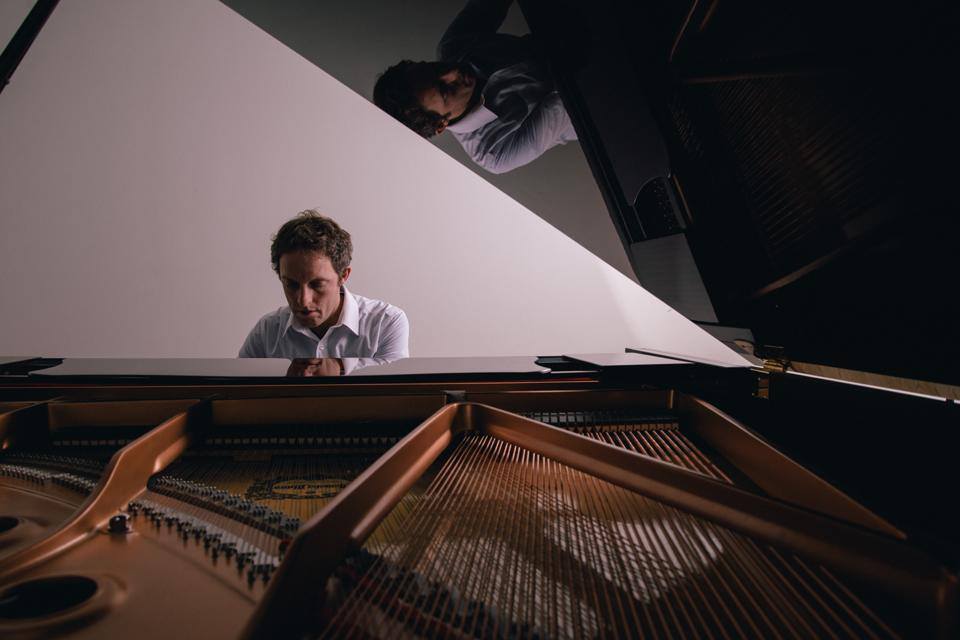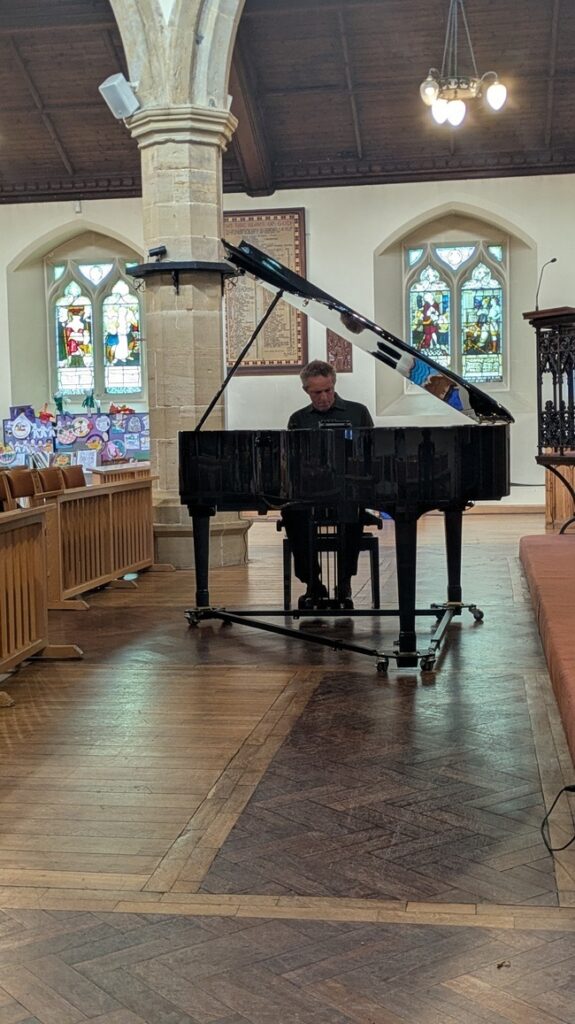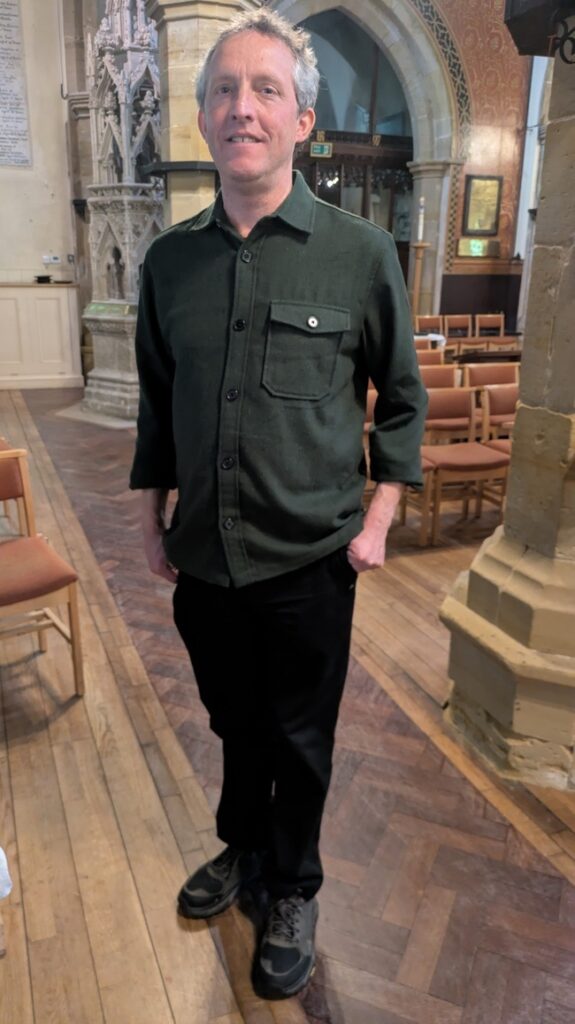Review by Simon Jenner, October 15 2025
★ ★ ★ ★ (★)
Improviser and neo-romantic composer Paul Taylor comes to St Nicholas trailing praise from everywhere from the BBC to the Guardian via International Piano Magazine.
Hailing from Newcastle, where he’s based, Taylor’s that rare though incrementally more popular phenomenon: the pianist/composer as improviser. It was part of all keyboard composers requirement from the earliest times through Bach Mozart and Beethoven, and even trickled through to a few pianists like Vladimir de Pachmann (1848-1933) who vamped till ready. The loss of this has been serious for the musical world and its audience. Its one preserve has been the organ, where improvising – something Bruckner excelled at in the nineteenth century – is still nurtured today. To a degree. Taylor plays the Hammond Organ, which suggests there’s some line of descent.
His palate is drenched in late romantic harmony, his paragraphs flowing and ever mutating as long peroration to the sun or misty afternoon we find ourselves in. There’s jazz inflections too, and traditions that highlight – and court – improvisation. But the overall palate is late-romantic.
The harmonies though similar are never static but unravel with sparkling sequences you think you know. It’s not possible to indicate a work that is a continual 45-minute unfolding.
Naturally Taylor is no throwback to late classical the last time people expected such feats. His palette is firmly early 20th century leaning towards Ravel, and his French and sometimes British contemporaries born mainly in the 1870s and early 1880s.
Not just Debussy (much less so) but those composers whose organ music proved the last outbursts of improv. Charles Tournemire, Louis Vierne, and minor masters of that French school like Jean Cras. And the nearest British middle period Frank Bridge, Arnold Bax, and the short-lived William Baines.
It’s a music that curious affinities with one composer Taylor doesn’t sound like at all: it’s too tonally based for Kaikhosru Sorabji but his improvisatory spirit can claim kinship. More, there’s a detailed structural drift underpinning the luscious harmonies, a kind of patterned flow that Sorabji likened to weaves in a Persian carpet. Sorabji too wrote for the organ and this instrument is the last bastion of improvisation even now.
It’s the slow gleam of a broken arpeggio or the sudden delicate phrasing in an eddying tempo that shows some of the mettle behind Taylor’s sweet harmonies. Sometimes as Taylor accelerates the spicier harmonies sharpen the appetite. Nothing though can shake Taylor or his audience from their uproarious calm. Rapturous, rare, captivating.
Photo Credit Simon Jenner




